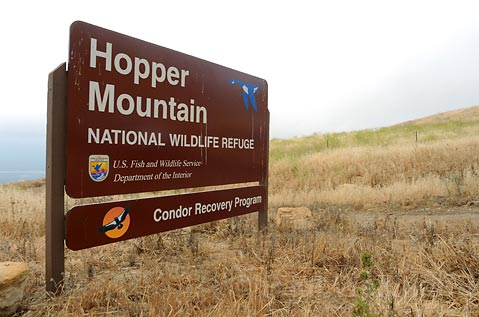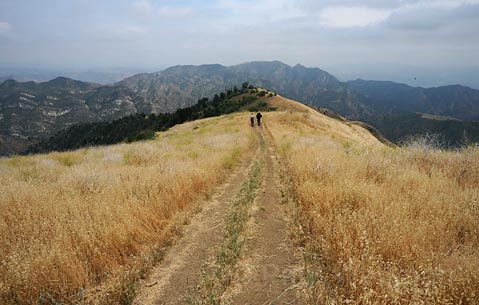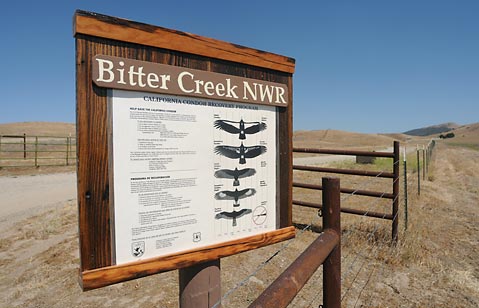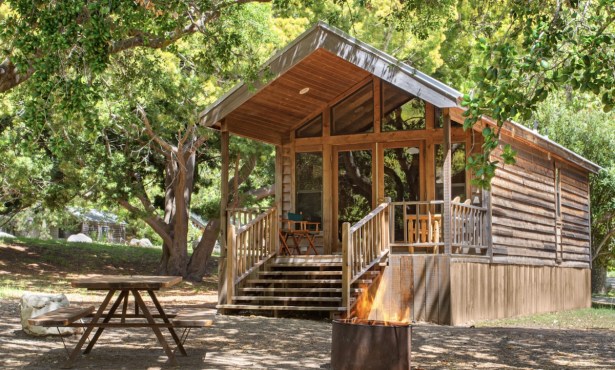Planning Underway for Region’s National Wildlife Refuges
Public Asked to Comment on Future of Hopper Mountain, Bitter Creek, and Blue Ridge

Although they’re not generally open to the public, the U.S. Fish and Wildlife Service’s system of National Wildlife Refuges do serve as sanctuaries for some of the country’s most beloved but endangered species, such as the California condor. [CORRECTION: Most of these refuges are, in fact, open to the public, just not these three. Sorry for the error.] They’re also home to plenty of native flora and more common fauna, and stand as open spaces that are slated to be preserved forever. One such landscape and habitat collection is the Hopper Mountain National Wildlife Refuge Complex, which is named after the ridges north of Fillmore that abut the Los Padres National Forest but also includes Bitter Creek (which is between the Los Padres and the Carrizo Plain), Blue Ridge (which is in Tulare County), and the Guadalupe-Nipomo Dunes (straddling the boundary of Santa Barbara and San Luis Obispo counties).

Today, Hopper Mountain, Bitter Creek, and Blue Ridge are in the early stages of updating their Comprehensive Conservation Plan, or CCP, and the government is seeking the public’s input on the future of these special places. When the plans are complete — a process that also allows for plenty of public input along the way — they will dictate the direction of conservation and management issues for the next 15 years.
“What we’re looking for from the public is input on what management issues they would like us to cover in the CCP,” explained Fish & Wildlife’s Michael Woodbridge. Although he admits that having these three refuges closed off to the public makes the process a bit more obscure, Woodbridge said that comments could include having more access for everyday citizens, accommodating species other than the condor, and bringing more of a focus on cultural resources. Plus, Woodbridge explained, “Much of this CCP process will be us educating the public about why these refuges exist and what we do on them.”

Woodbridge is trying hard to get the word out because the refuges are located near very small towns, such as Fillmore and Maricopa, so he is hoping that people from Santa Barbara and other larger communities come as well. “We’d like to get a big, diverse turnout for the meetings,” he said.
The meeting about Hopper Mountain, which was created in 1974 and encompasses 2,471 acres, is on Tuesday, April 20, 6-8 p.m. at the City of Fillmore’s council chambers, 250 Central Avenue. The meeting about Bitter Creek, which was established in 1985 and includes more than 14,000 acres, is on Wednesday, April 28, 6-8 p.m. at The Historic Fort Taft, main auditorium, 915 North 10th Street in Taft. The meeting about Blue Ridge, which was created in 1982 and holds nearly 900 acres, is on Thursday, May 6, 4:30-6:30 p.m. at the U.S. Forest Service’s Sequoia National Forest offices, 1839 South Newcomb Street, in Porterville.
If you are unable to attend the meetings, written comments are also being accepted. Send to U.S. Fish and Wildlife Service, Pacific Southwest Region, Refuge Planning, Attn: Sandy Osborn, 2800 Cottage Way, Suite W-1832, Sacramento, CA, 95825, fax to 916-414-6497, or e-mail to fw8plancomments@fws.gov.
For more information, see fws.gov/hoppermountain.



